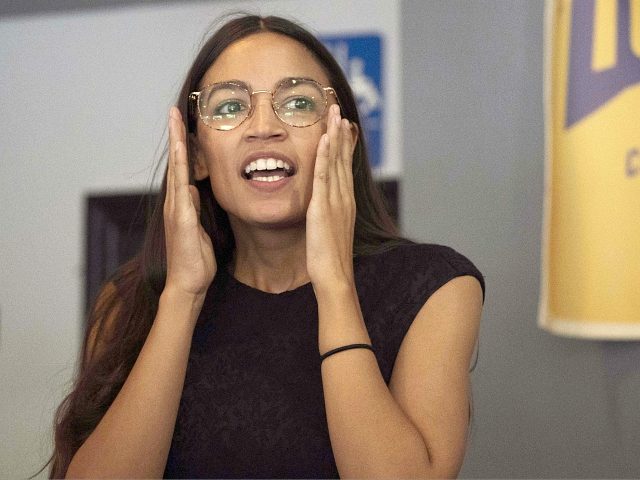The Democratic plan to bring about a “massive transformation of society” known as the Green New Deal would also require a radical transformation of the American financial system to finance its ambitious plans.
Rep. Alexandria Ocasio Cortez, D-NY, and Sen. Ed Markey, D-Mass., introduced a resolution outlining a 10-year plan to address climate change that also promised guaranteed jobs to those who want to work, economic security to anyone unwilling to work, and “a just transition for all communities and workers.”
The plan is unaffordable under ordinary means, Cortez and Markey admit.
“The level of investment required is massive,” they wrote in a summary of the plan. “Even if every billionaire and company came together and were willing to pour all the resources at their disposal into this investment, the aggregate value of the investments they could make would not be sufficient.”
So how would the plan be funded? Through the creation of a New Green Deal financial system.
“The Federal Reserve can extend credit to power these projects and investments and new public banks can be created to extend credit,” they write
Cortez and Markey claim, erroneously, that this is no different from the way we paid for “the New Deal, the 2008 bank bailout and extended quantitative easing programs. The same way we paid for World War II and all our current wars.”
In fact, the 2008 bank bailouts were paid through by money appropriated by Congress that came from the U.S. Treasury’s general fund. The New Deal was not financed by the credit extended directly from the Federal Reserve. Neither was World War II or any subsequent war. The costs of these added to the U.S. deficit and were financed through government issuing bonds to investors.
Alone among Cortez and Markey’s examples, quantitative easing involved direct Federal Reserve investments. But the Federal Reserve did not finance particular projects, individuals, corporations, or banks through quantitative easing. Instead, it purchased bonds issued by the U.S. Treasury or backed by Ginnie Mae, Freddie Mac, and Fannie Mae. In doing so, it merely exchanged longer-term government liabilities–the bonds–for very short term liabilities–dollars in its attempt to push down interest rates even though its short term target was already at zero.
The Federal Reserve does occasionally lend directly to banks, primarily through its discount rate window that banks may turn to if they fall short of reserves. But in practice, banks rarely borrow from the Fed. The Fed also can intervene in the overnight funding market to keep interbank lending rates near its target but this also is rarely necessary. The Fed also now pays banks interest on excess reserves.
There is, in fact, no precedent for the kind of direct financing from the Fed that the Cortez-Markey Green New Deal envisions. And the mistake calls into question how well the Green New Deal proponets understand what their own plan requires.
The closest historical analogy may be the Federal Home Loan Banks. These were created as part of the New Deal originally to refinance mortgages and prevent defaults. Today the 11 regional Federal Home Loan Banks extend loans to thrift institutions, commercial banks, credit unions, insurance companies, and certified community development financial institutions. These loans are primarily collateralized with mortgage loans, Treasurys, and debt backed by government-sponsored entities, although small community financial institutions may pledge small business, small farm, and small agri-business loans as collateral.
They are not, however, backed by the Federal Reserve or the U.S. taxpayer–at least not officially. While their mandate reflects a public purpose–mortgage affordability–each of the banks is privately capitalized and they do not regularly receive any taxpayer assistance. It is likely, however, that if a Federal Home Loan Bank were to fail that the government would step in to support it.
Importantly, the Federal Home Loan Bank system did not involve the creation of a new banking system for mortgage lending but tacked a kind of interbank lending system on top of the existing system. That is very different from the Federal Reserve to New Green Bank system advocated by Cortez and Markey.

COMMENTS
Please let us know if you're having issues with commenting.